Jeanne French, “The 1947 Los Angeles, “Red Lipstick Murder” – LAPD Confirms Victim Murdered by Same Suspect who Killed the “Black Dahlia.”
October 4, 2025
Birch Bay, Washington
“The Red Lipstick Murder”
 Jeanne Axford French
Jeanne Axford French
On the morning of February 10, 1947, just three weeks after the murder of Elizabeth Short, the body of 44-year-old Jeanne Axford French was discovered in a vacant lot near Grand View and Coliseum Street in West Los Angeles. French — a nurse, aviatrix, in the midst of a divorce — had been beaten, stomped, and stripped.

Jeanne French Crime Scene LAPD detectives discover and photograph killer’s “red lipstick” message”
Jeanne French: The Killer’s Reply to a False Confessor
The “Standalone” Myth
For decades, critics and armchair theorists have treated the Black Dahlia murder as a standalone crime — “none before, none after.” Their suspects only make sense if Elizabeth Short’s killing was an isolated act. But serial killers don’t operate that way, and the moment you understand (as the LAPD did in 1947) that the Black Dahlia was part of a series, all of those pet theories collapse.
The Press Trap
On February 8, 1947, the Herald Express ran with bold headlines: “CORPORAL DUMAIS IS BLACK DAHLIA KILLER.” The “confessor” was Cpl. Joseph Dumais, who claimed he was the Black Dahlia Avenger. The LAPD and the press, working with Hollywood screenwriter Steve Fisher, staged this ploy in hopes of luring the real killer into the open. But Dumais was a false lead — he was on base when Short was murdered.
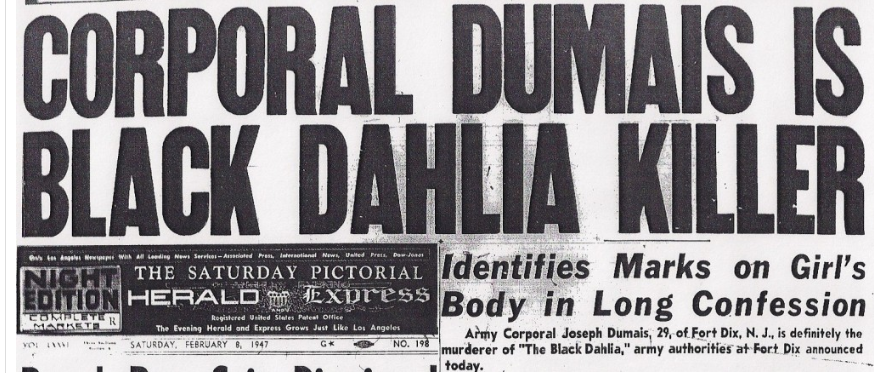
The Killer’s Reply
Just two days later, on February 10, 1947, Jeanne Axford French was found dead in a West Los Angeles lot, just five miles west of where the Black Dahlia had been posed on a vacant lot. She had been beaten, stomped, and stripped and her clothing ceremoniously placed atop her nude body. When detectives at the crime scene removed her clothing they discovered a personal message written TO THEM written in red lipstick. It read:
“FUCK YOU B.D.”

This was no random taunt. It was George Hill Hodel’s direct response to the LAPD and press. His obscene message mocked their phony “confessor” and reclaimed his authorship of the Black Dahlia murder.
Official Confirmation
The LAPD itself recognized that these killings were not isolated events. Captain of Detectives Jack Donahoe publicly stated that the Dahlia and French murders were the work of the same killer. Around the same time, the Department released to the press a list of eleven points of similarity linking at least four of Los Angeles’s recent “Lone Woman Murders” to the same suspect, whom they called a “chain killer.”
Location, Location, Location
Another overlooked aspect of the case is the location where French’s body was posed. She was found just off Grand View Street in West Los Angeles.
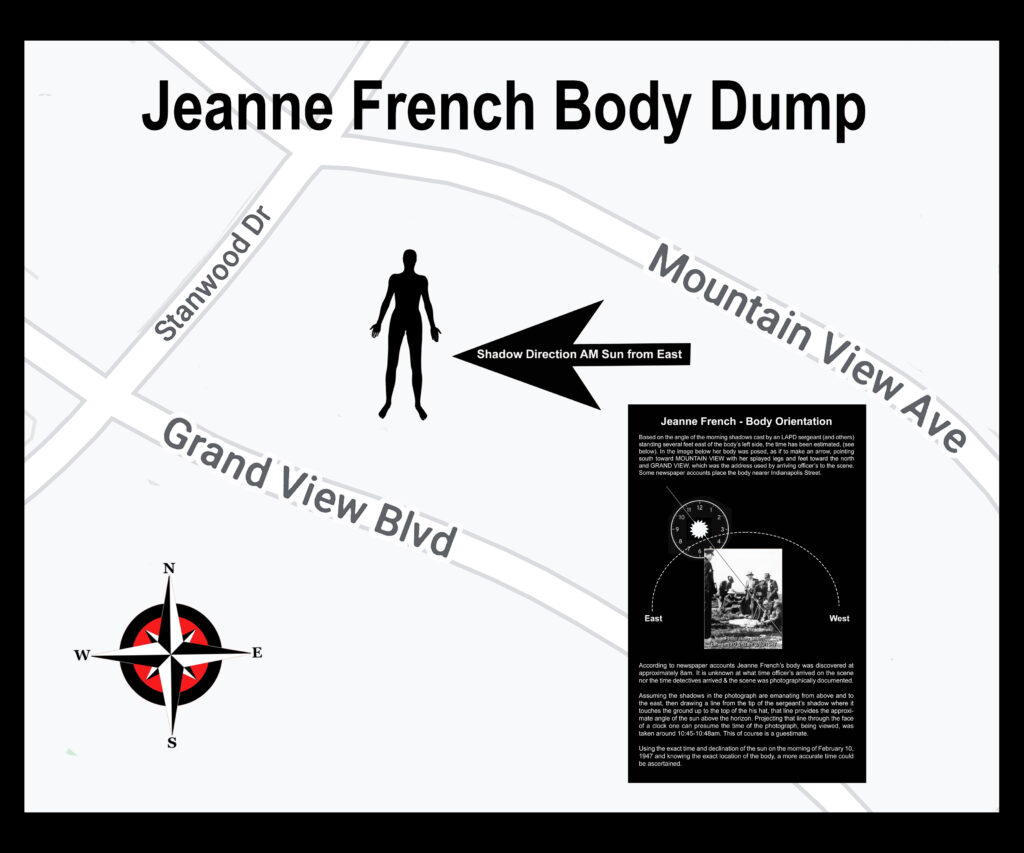
To most, this was coincidence. To George Hodel, it was a deliberate clew. Elizabeth Short, the Black Dahlia, had been buried only weeks earlier at Grand View Cemetery in Oakland, California. By leaving French’s body on Grand View Street, Hodel was continuing a crime signature he would repeat in at least five murders: selecting body dump sites at street names that carried symbolic references to his victims or his crimes.
Comparative Analysis: Jeanne French Lipstick ‘D’ and George Hill Hodel’s Handwriting
Judge for yourself!
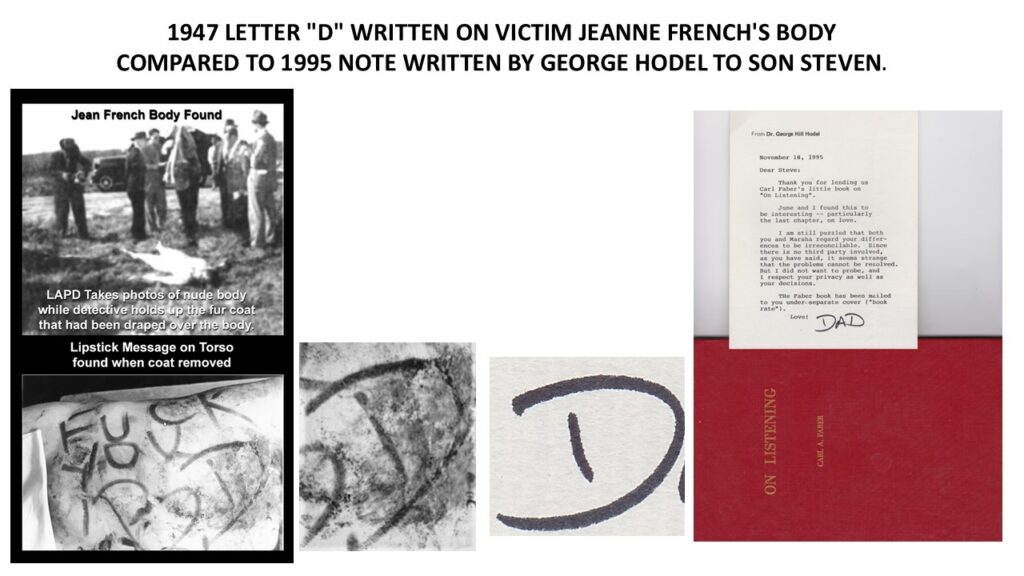
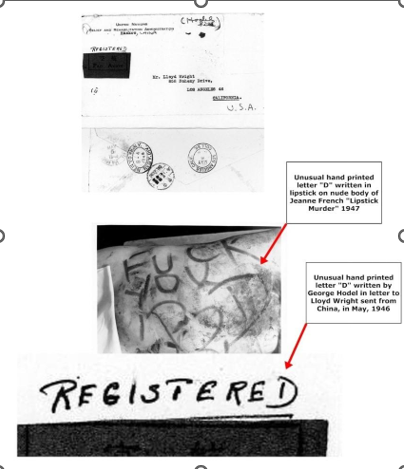
Jeanne French Homicide – Handwriting Evidence
Lipstick message scrawled on Jeanne French’s torso (February 10, 1947) compared with known handwriting samples of Dr. George Hill Hodel. The unusual, stylized formation of the letter “D” is consistent across sources: (1) the lipstick inscription on French’s body, (2) a 1946 letter Hodel sent from China, and (3) a 1995 personal note to his son. The recurrence of this distinctive form strengthens the evidentiary linkage between Hodel and the crime scene writing.
The comparison of the “D” characters across five decades demonstrates a consistent, highly unusual form—open-topped, rounded, and leaning forward with exaggerated curvature. This peculiar formation is not standard block printing and strongly indicates authorial identity rather than coincidence. The “D” inscribed in lipstick on Jeanne French’s body in 1947 is virtually identical to George Hill Hodel’s earlier and later hand-printed “D’s,” including those found in his 1946 letter to Lloyd Wright, his 1995 correspondence, and his signed Faber book. The recurrence of this rare stylistic marker across disparate contexts—crime scene and private letters—provides compelling evidence that the same hand authored both.
In 2002 Court Certified Handwriting Expert, Hanna McFarland, examined the writing on Jeanne French’s body “Fuck You B.D.” and compared it to more than a dozen samples of George Hodel’s handwriting and found it to be “highly probable that George Hodel wrote the lipstick message on Jeanne French’s body.” (Highly probable is the highest result an expert can come to without the original sample. (This being the body of the victim, French.) But, “highly probable” is the equivalent of being virtually certain that the handwriting was a match.
SKH Note- In the past twenty-four years, no handwriting expert has given a contradicting opinion and claimed the handwriting is not George Hodel’s. One expert who was requested to make a comparison for a television network and was given only several of George Hodel’s handwriting samples claimed it was “insufficient to include or exclude Dr. Hodel as the writer of the notes/and lipstick message on the body.”
By early 1947, Jeanne French was not the killer’s “second victim,” but rather one more in a continuing series of Lone Woman Murders stretching back to 1943. Handwriting evidence firmly places her among Hodel’s victims, expanding the known count and confirming the continuity of his crimes in Los Angeles.
The murder of Jeanne French wasn’t random, nor was it disconnected from Elizabeth Short. It was part of a continuing series of Lone Woman Murders committed by the Black Dahlia Avenger. French was George Hodel’s sixth Los Angeles victim since 1943 — and far from the last. More Los Ange;es victims would follow in the years ahead, until George Hodel was finally forced to flee the country to avoid arrest.
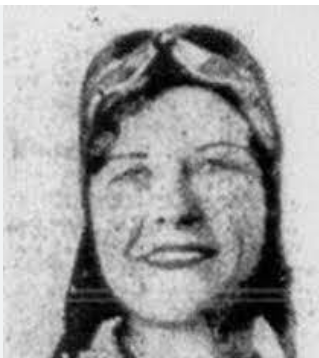 Jeanne Axford French
Jeanne Axford French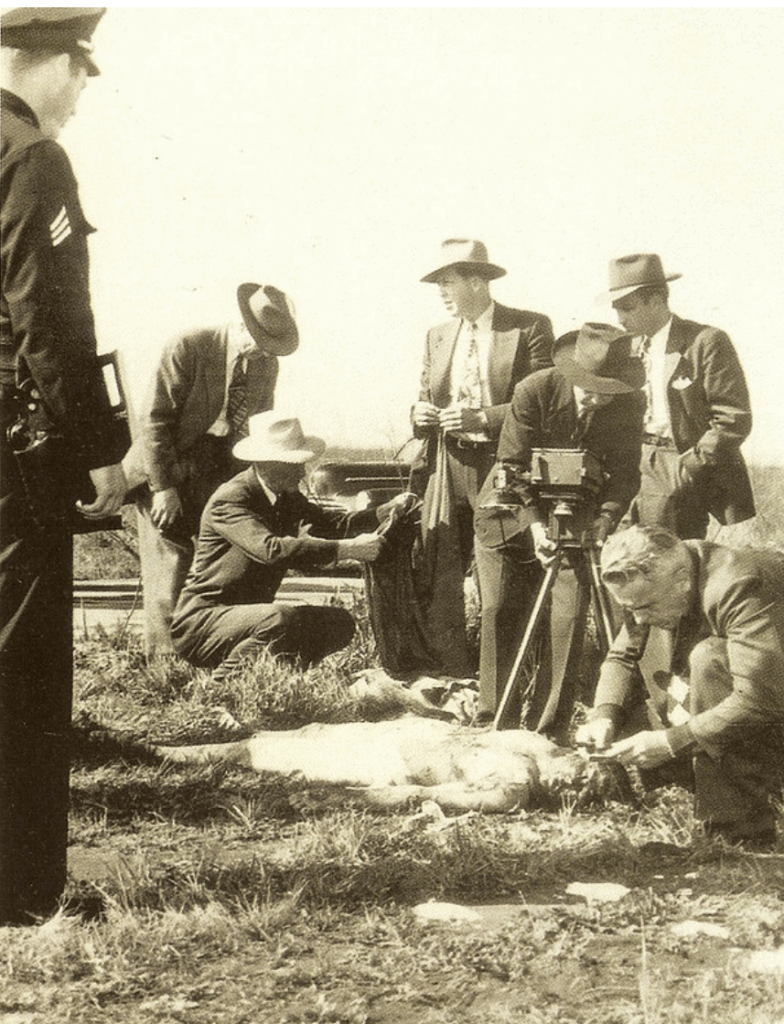
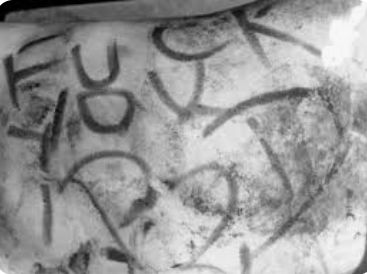
Forgive me if I repeat what you have covered in The Early Years and In The Mesquite (I have not read those books), but are there similar street name connections between those murders and the LA murders?
It would stand to reason that GHH would have devised this strategy of clues early on in his criminal career as it is so elaborate and taunting. By connecting the murders in such a fashion, he was leaving behind a trail of evidence to follow which required cooperation between police departments which rarely happened then and rarely happens today by my understanding.
I suspect he wanted someone to eventually connect the crimes and expose him. That you have done so long after his death is a sign of his high intelligence and his ability to lead two distinct lives far removed from each other yet both were in plain sight.
Like many other mysteries sometimes the hints have always been in view and it takes one simple insight to see what has been there all along. Kudos on discovering what could only be called a unique way of chronicling GHH’s criminal acts.
Ron R:
Not street name In The Mesquite, but his same taunting “clew” went even further by posing the two victims bodies (mother and daughter) to form the letters, “G.H.” his initials.